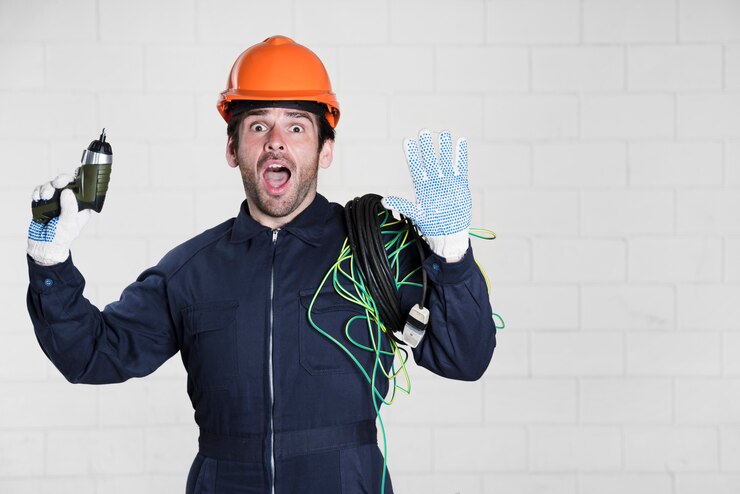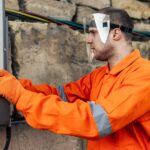Introduction
Your home’s electrical system is critical to your everyday comfort and safety. From powering appliances and lighting to running essential devices, electricity is at the heart of modern living. However, like any system, it can experience issues over time, ranging from minor inconveniences to serious hazards. Understanding common household electrical problems and knowing when to call a professional electrician can help you avoid dangerous situations and ensure your home remains safe and functional.
In this article, we’ll explore some of the most typical electrical problems found in homes and provide guidance on when it’s best to call a qualified electrician.
1. Frequent Electrical SurgesThe Problem
Electrical surges can occur when there’s a sudden spike in your home’s electrical current. These surges are often caused by lightning strikes, faulty appliances, or problems with the electrical grid. While they usually last only a fraction of a second, frequent surges can damage your electrical appliances and shorten their lifespan.
Solution and When to Call an Electrician
If surges are happening frequently, it’s likely due to an issue with your wiring or a faulty device connected to your electrical system. While occasional surges are not a major cause for concern, consistent surges indicate a more serious problem. An electrician should be called to inspect your wiring, identify any faulty devices, and ensure that your electrical system is grounded properly.
2. Flickering or Dimming LightsThe Problem
If your lights flicker or dim when you use certain appliances, such as your microwave or washing machine, this could indicate an overloaded circuit. It’s common for lights to slightly dim when a high-powered appliance is switched on, but frequent or severe flickering is a red flag.
Solution and When to Call an Electrician
Flickering lights may be caused by poor connections in your electrical system, overloaded circuits, or even faulty wiring. You may also be overloading your circuit with too many devices. An electrician can determine if the wiring needs upgrading, if your circuit breakers need adjusting, or if you need to reduce the load on specific circuits. Flickering lights are often a sign that something isn’t right, so it’s wise to call an electrician before the issue worsens.
3. Tripping Circuit BreakersThe Problem
Circuit breakers are designed to trip when too much electricity flows through the circuit, which prevents overheating and potential fires. However, if your circuit breakers trip frequently, it can be an indication that you’re overloading the circuit or that there’s a deeper electrical issue.
Solution and When to Call an Electrician
While occasional tripping is normal and may simply mean that you’re using too many high-powered devices at once, frequent trips suggest there’s a more significant issue at play. It could be a short circuit, ground fault, or a faulty appliance. An electrician can inspect your electrical panel and wiring to identify the cause and recommend solutions such as upgrading circuits or adding additional breakers.
4. Warm or Sparking Outlets and SwitchesThe Problem
If you notice that an electrical outlet or light switch feels warm to the touch, or worse, sparks when you plug something in, this is a serious issue that requires immediate attention. Warm outlets can indicate overloaded circuits, faulty wiring, or poor installation, while sparking outlets are often a sign of a short circuit.
Solution and When to Call an Electrician
Never ignore warm or sparking outlets. These are strong indicators of potentially dangerous electrical problems, including the risk of an electrical fire. Stop using the outlet immediately and call an electrician to assess the situation. They can replace faulty wiring, repair damaged outlets, or upgrade your system to handle the electrical load more safely.
5. Dead OutletsThe Problem
A dead outlet is one that no longer provides power when you plug something in. This can happen for a variety of reasons, including a tripped circuit breaker, a blown fuse, or damaged wiring. Sometimes, the outlet itself is defective.
Solution and When to Call an Electrician
If you’ve ruled out a tripped breaker or a blown fuse, and the outlet still isn’t working, it’s time to call an electrician. Dead outlets can be a sign of larger electrical issues, such as loose connections or damaged wiring inside your walls. An electrician will diagnose the problem and replace the outlet or wiring as needed.
6. Buzzing or Humming Noises from Electrical SystemsThe Problem
Electricity itself should be silent, so if you hear buzzing, humming, or crackling sounds coming from outlets, switches, or your circuit breaker panel, it’s a clear sign that something is wrong. These noises are often caused by loose wiring, overloaded circuits, or faulty devices.
Solution and When to Call an Electrician
If you hear buzzing or humming from any part of your electrical system, it’s important to call an electrician right away. These sounds indicate electrical arcing or a loose connection, both of which pose serious fire risks. An electrician can inspect the affected area, secure any loose connections, and repair or replace faulty components.
7. Outdated or Damaged WiringThe Problem
Older homes, especially those built before the 1970s, may still have outdated wiring, such as aluminum wiring or knob-and-tube systems. These older wiring methods can be unsafe, as they weren’t designed to handle the electrical loads required by modern appliances and devices. In some cases, wiring may become frayed, damaged, or deteriorated over time, increasing the risk of electrical fires or shocks.
Solution and When to Call an Electrician
If your home has old or damaged wiring, it’s essential to have it inspected by an electrician. They can assess the condition of the wiring and recommend rewiring or upgrading your electrical system. If you notice visible damage, such as frayed wires or a burning smell, call an electrician immediately to avoid the risk of fire or electrical shock.
8. Overloaded Power Boards and Extension CordsThe Problem
Many homeowners use extension cords and power strips to plug in additional devices, especially in older homes that may not have enough outlets. However, overloading power boards with multiple high-energy appliances can cause overheating and increase the risk of fire.
Solution and When to Call an Electrician
While extension cords are useful for temporary setups, they shouldn’t be relied on for permanent use. If you’re consistently running out of outlets, it’s time to call an electrician to install additional outlets or circuits in your home. They can safely distribute the load across your electrical system, reducing the risk of overload and fire.
9. Shocks When Touching Appliances or OutletsThe Problem
If you experience a mild shock or tingling sensation when touching an electrical appliance, switch, or outlet, this could be a sign of faulty grounding or wiring issues. Electrical shocks occur when an electrical current escapes the wiring and finds an unintended path, such as through you.
Solution and When to Call an Electrician
Even minor electrical shocks should not be ignored, as they could indicate a serious underlying problem with your wiring or grounding. An electrician can identify the cause and ensure that your electrical system is properly grounded and insulated to prevent shocks in the future.
Conclusion: When in Doubt, Call a Professional
While some minor electrical issues can be resolved by homeowners, many require the expertise and tools of a professional electrician. Electrical problems can be hazardous if not addressed promptly and correctly, leading to electrical fires, appliance damage, or serious injury.
If you experience any of the issues listed above, it’s always safer to call an electrician to assess and repair the problem. By taking quick action and relying on professional expertise, you can keep your home’s electrical system functioning safely and efficiently.







